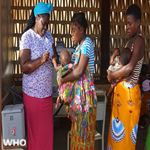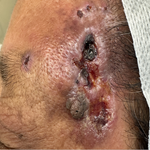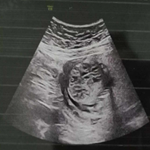The critical role of complete blood count in the management of patients with COVID-19
Maryame Ahnach, Nouama Bouanani, Sara Nejjari, Mounia Bendari, Kamal Doghmi, Chafik El kettani
Corresponding author: Maryame Ahnach, Department of Hematology, Cheikh khalifa International University Hospital, Mohammed VI University of Health Sciences Casablanca, Morocco 
Received: 26 May 2020 - Accepted: 28 May 2020 - Published: 04 Jun 2020
Domain: Infectious disease
Keywords: COVID-19, complete blood count, hematology abnormaly
This article is published as part of the supplement PAMJ Special issue on COVID - 19 in Africa, commissioned by The Pan African Medical Journal.
©Maryame Ahnach et al. Pan African Medical Journal (ISSN: 1937-8688). This is an Open Access article distributed under the terms of the Creative Commons Attribution International 4.0 License (https://creativecommons.org/licenses/by/4.0/), which permits unrestricted use, distribution, and reproduction in any medium, provided the original work is properly cited.
Cite this article: Maryame Ahnach et al. The critical role of complete blood count in the management of patients with COVID-19. Pan African Medical Journal. 2020;35(2):63. [doi: 10.11604/pamj.supp.2020.35.2.23764]
Available online at: https://www.panafrican-med-journal.com//content/series/35/2/63/full
Letter to the editors 
The critical role of complete blood count in the management of patients with COVID-19
The critical role of complete blood count in the management of patients with COVID-19
Maryame Ahnach1,&, Nouama Bouanani1, Sara Nejjari1, Mounia Bendari1, Kamal Doghmi2, Chafik El kettani3
1Department of Hematology, Cheikh khalifa International University Hospital, Mohammed VI University of Health Sciences Casablanca, Morocco, 2Department of Hematology, Military Hospital Mohammed V, Mohammed V University Faculty of medicine and Pharmacy, Rabat, Morocco, 3Department of Anesthesiology and Reanimation, Cheikh khalifa International University Hospital, Hassan II VI University Faculty of Medicine and Pharmacy, Casablanca, Morocco
&Corresponding author
Maryame Ahnach, Department of Hematology, Cheikh khalifa International University Hospital, Mohammed VI University of Health Sciences Casablanca, Morocco
Since March 2020, the world has declared a global health crisis caused by the coronavirus COVID-19 pandemic. After Asia, Europe, the United States is the most affected. The main features described are pulmonary manifestations, however, this systemic infection seems to have a direct impact on the hematopoietic system. Many publications have documented the clinical, biological and radiological characteristics of COVID-19 infection, and several international societies have developed protocols for management and follow-up. In these recommendations, biological analysis and especially the complete blood count, represents a major tool in the diagnosis, monitoring, detection of severe forms, and hematological complications [1]. Quantitative hematologic abnormalities have been reported since the first papers, all blood cells can be affected during COVID-19, mainly leukocyte and platelet cells [2].
During asymptomatic forms or the incubation period, patients can manifest a moderate abnormality in the blood count, Qilin et al suggested the potential value of eosinopenia as predictors of early identification of COVID-19 [3]. Regarding symptomatic forms, Guan et al found in a large series of 1099 cases, a predominance of lymphopenia (83%), thrombocytopenia (36.2) and neutropenia (33.7%) [4]. In severe cases, these abnormalities were more prominent (96.1% versus 80.4% lymphopenia, 57.7% versus 31.6% thrombocytopenia and 61.1% versus 28.1% for leukopenia) [5]. Lymphopenia is the most common sign, in fact, the coronavirus attack directly and indirectly the lymphocytes by immune and inflammatory mechanisms [6]. The analysis of the lymphocyte count is therefore a reliable indicator of the severity, which can be really useful in the monitoring and therapeutic adaptation, moreover after clinical improvement the lymphocyte count is corrected [7].
Among recent studies, a meta-analysis, have reported the association between low platelet count (less than 30 109/l) and the increased risk of severity and mortality from COVID-19. The pathophysiologic mechanism of thrombocytopenia is multifactorial due mainly to disseminated intravascular coagulation, micro-vascular thrombosis and macrophagic activation syndromes, that can cause bleeding and poor outcome [8]. In summary, the blood count as a routine biological analysis, keeps a prominent role in the early diagnosis and follow-up of COVID-19 infection. The blood cells perturbations are seen as a prognosis factors, careful analysis and interpretation of lymphocyte and platelet count, allows not only to evaluate the prognosis, but above a clinician to adapt therapeutic care. Compared to specific inflammatory biomarkers tests (Lactate dehydrogenase, Interleukin, procalcitonin, etc.), the blood count remains a less expensive alternative, especially in countries with limited resources.
All authors declare no competing interests.
Maryame Ahnach conceptualized and write the manuscript. Nouama Bouanani, Mounia Bendari , Kamal Doghmi and Chafik El kettani collect data. All authors have read and approved the final version of manuscript.
- Lippi G, Plebani M. Laboratory abnormalities in patients with COVID-19 infection. Clin Chem Lab Med. 2020 Mar 3. PubMed | Google Scholar
- Fan BE, Chong VCL, Chan SSW, Lim GH, Lim KGE, Tan GB. Hematologic parameters in patients with COVID-19 infection. Am J Hematol. 2020 Jun;95(6):E131-E134. PubMed | Google Scholar
- Li Q, Ding X, Xia G, Geng Z, Chen F, Wang L et al. A simple laboratory parameter facilitates early identification of COVID-19 patients. medRxiv2020. Google Scholar
- Guan WJ, Ni ZY, Hu Y, Liang W, Chun-Quan Ou , Jian-Xing He et al. Clinical Characteristics of Coronavirus Disease 2019 in China. N Engl J Med. 2020;382(18):1708-1720. PubMed | Google Scholar
- Terpos E, Ntanasis-Stathopoulos I, Elalamy I, Kastritis E, Sergentanis TN, Politou M et al. Hematological findings and complications of COVID-19. Am J Hematol. 2020 Apr 13;10.1002/ajh.25829. PubMed | Google Scholar
- Li Tan, Qi Wang, Ding DZJ, Huang Q, Tang Y et al. Lymphopenia predicts disease severity of COVID-19: a descriptive and predictive study. Signal Transduct Target Ther. 2020 Mar 27;5:33. PubMed | Google Scholar
- Wang F, Nie J, Wang H, Zhao Q, Xiong Y, Deng L et al. Characteristics of peripheral lymphocytes subset alteration in COVID-19 pneumonia. J Infec Dis. 2020 May 11;221(11):1762-1769. PubMed | Google Scholar
- Lippi G, Plebani M, Henry BM. Thrombocytopenia is associated with severe coronavirus disease 2019 (COVID-19) infections: A meta-analysis. Clin Chim Acta. 2020;506:145-148. PubMed | Google Scholar
Search
This article authors
On Pubmed
On Google Scholar
Citation [Download]
Navigate this article
Similar articles in
Key words
This supplement
- Clinical presentation, case management and outcomes for the first 32 COVID-19 patients in Nigeria (Accessed 18958 times)
- COVID-19 and the Nigerian child: the time to act is now (Accessed 17894 times)
- Profil clinique, biologique et radiologique des patients Algériens hospitalisés pour COVID-19: données préliminaires (Accessed 10355 times)
- The COVID-19 pandemic and social distancing in Nigeria: ignorance or defiance (Accessed 6430 times)
- Knowledge, risk perception and preparedness towards coronavirus disease-2019 (COVID-19) outbreak among Ghanaians: a quick online cross-sectional survey (Accessed 6234 times)
- Continuity of health service delivery during the COVID-19 pandemic: the role of digital health technologies in Uganda (Accessed 4205 times)
- Knowledge, risk perception and preparedness towards coronavirus disease-2019 (COVID-19) outbreak among Ghanaians: a quick online cross-sectional survey (Downloaded 868 times)
- Clinical presentation, case management and outcomes for the first 32 COVID-19 patients in Nigeria (Downloaded 611 times)
- The COVID-19 pandemic and social distancing in Nigeria: ignorance or defiance (Downloaded 601 times)
- Profil clinique, biologique et radiologique des patients Algériens hospitalisés pour COVID-19: données préliminaires (Downloaded 473 times)
- Continuity of health service delivery during the COVID-19 pandemic: the role of digital health technologies in Uganda (Downloaded 456 times)
- COVID-19 and the Nigerian child: the time to act is now (Downloaded 350 times)









